|
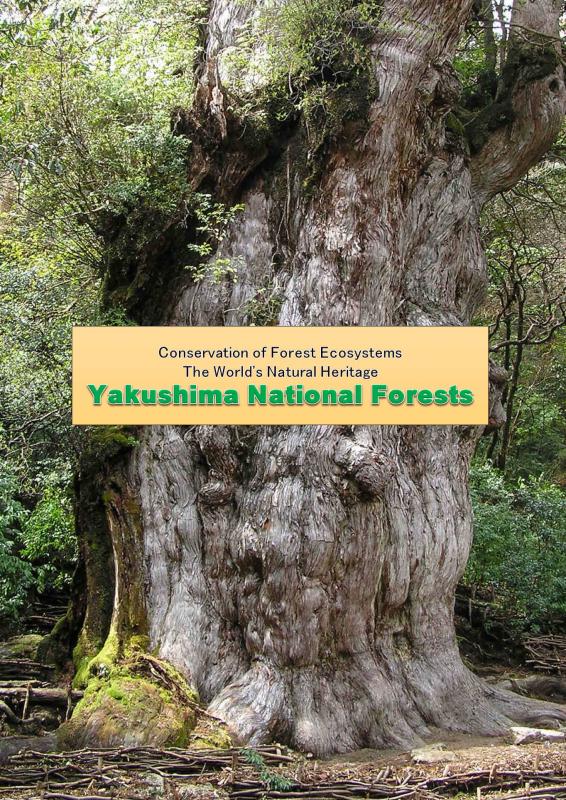
|
Jomon-sugi, a cedar named after the Japane-
se Neolithic cultural period.
Height : 25.3 meters
Circumference at adult’s chest height : 16.4meters
|
|
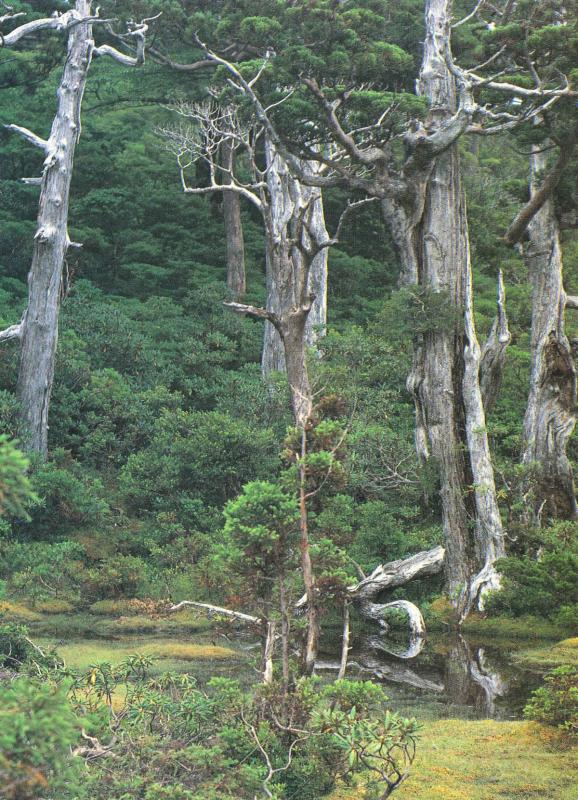
|
HANANOEGO is a sphagnous moor at the mouth of Mt. Kuromi. 1600 meters above sea level, on
central Yaku Island. The moor that surrounded by dwarf,skeletonized Cryptomeria japonica and
by Juniperus chinensis var. sargentii and Rhododendron yakushimanum, gives a unique view of
Yaku Island
|
|
|
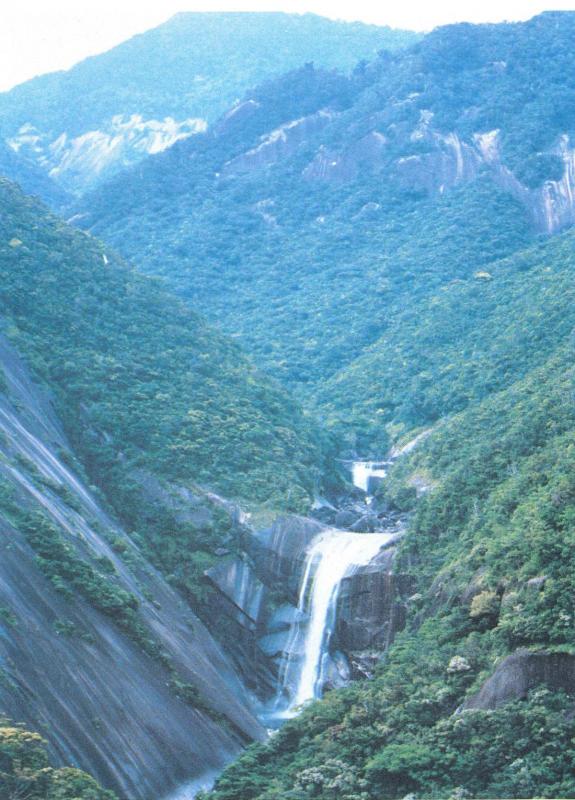
|
Annual precipitation in the mountainous regions reaches the 8,000-to 10,000-millimeter level. The land-
scape of Yaku Island is so steep that every river has falls.The photograph shows a magnificent view of nearshore Sempironotaki Falls of the River, which originates in the mountainous region called Okudake and descends through dense primary Yaku-sugi cedar forests and then the evergreen broad leaved forests of the warm-temperate zone.
|
|
|
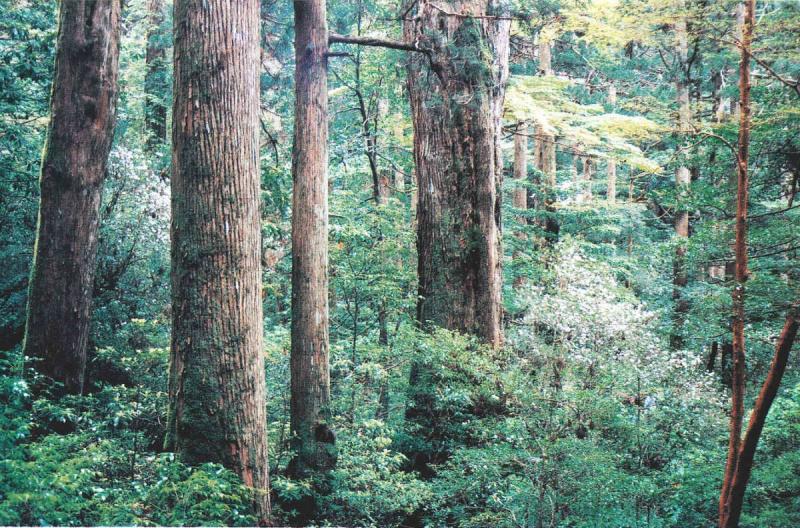
|
Yaku-sugi are cedar trees over 1,000 years old: they have knots on their trunks, and their bark is gray,glossy, and smooth. Kosugi cedars are younger than 1,000 years of age: they stand straight to their crowns,and their bark is brownish with rough surfaces.
|
|
|
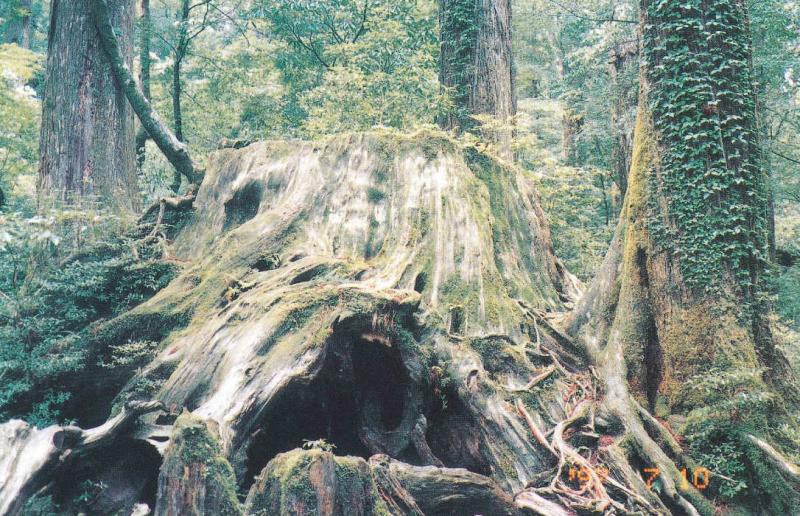
|
This stump was discovered in 1925 by Ernest Henry Wilson, an American botanist. Now called the Wilson Stump, it is considered to be the remains of a tree which was cut down some 350 years ago. The interior of the stump is 8.5 meters in diameter, and has a spring flowing out of it.
|
|
|
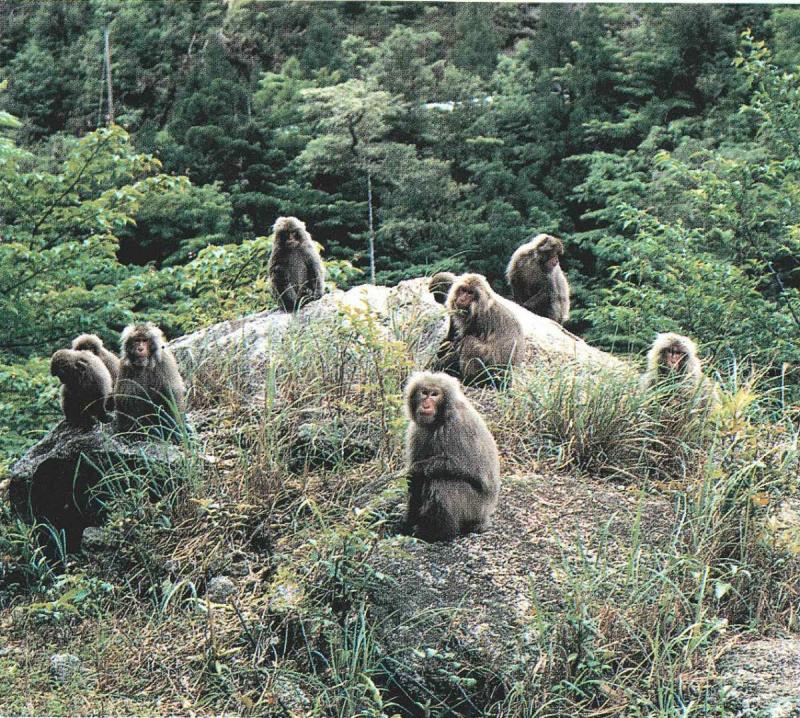
|
Yaku monkeys are classified as a subspecies of Japanese monkey (Macaca fuskata). They are found only on Yaku Island,at the southern distribution limit of Japanese monkeys. The habitats of Yaku monkeys range from the subtropical seashore and warm temperate forests to the Sasa yakushimanum zones at the tops of mountains, for an altitudinal difference of over 1,800 meters
|
|
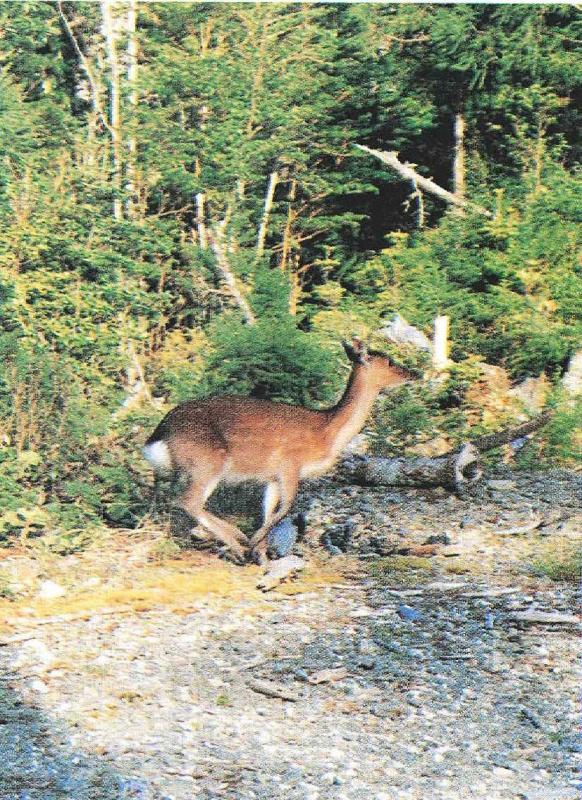
|
Yaku deer (Cervus nippon yakushimae) are a separate subspecies from Kyushu deer and Honshu deer, which inhabit the Kyushu and Honshu regions, respectively.Yaku deer are characterized by their extra-ordinarily small body size and thin, short
antlers.
|
|
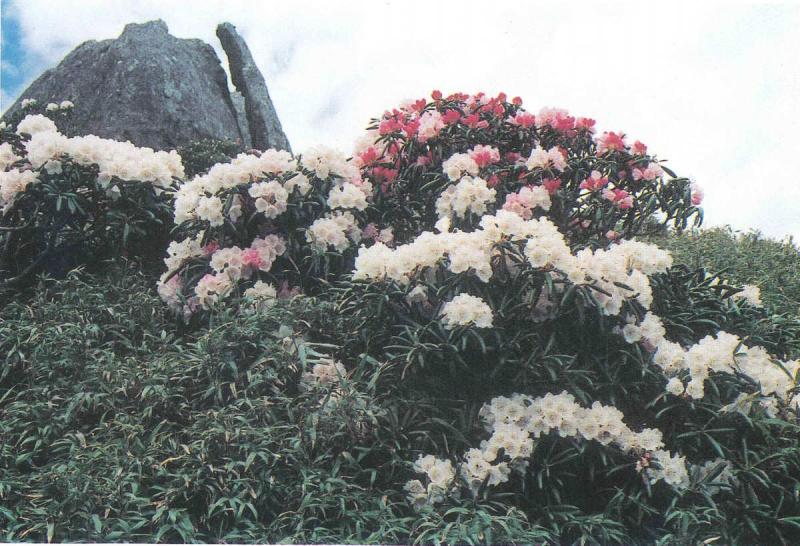
|
Rhododendron yakushimanum are seen at altitudes of about l,600meters above sea level and higher.
They grow even in the Yakuzasa zones beyond the forest limit, and bloom in June and July.
Characteristically,brown fuzz grows thick on the backs of leaves of Rhodedndron yakushimanum;the higher the altitude of their habitats, the smaller and the thiker their leaves become.
|
|
|
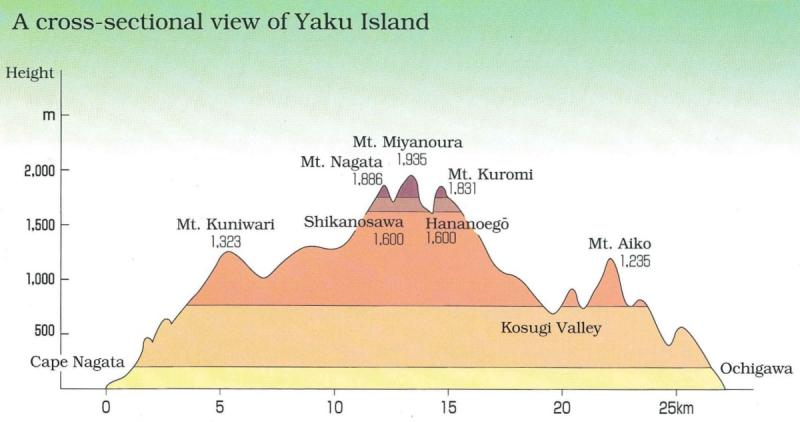
|
The central region of Yaku Island is called "Okudake." It contains Mt. Miyanoura, the highest mountain
in Kyushu, as well as Mt. Nagata and Mt. Kuromi, both over 1500 meters in elevation. The lower half of the central mountainous region is called" Maedake."
|
|
|
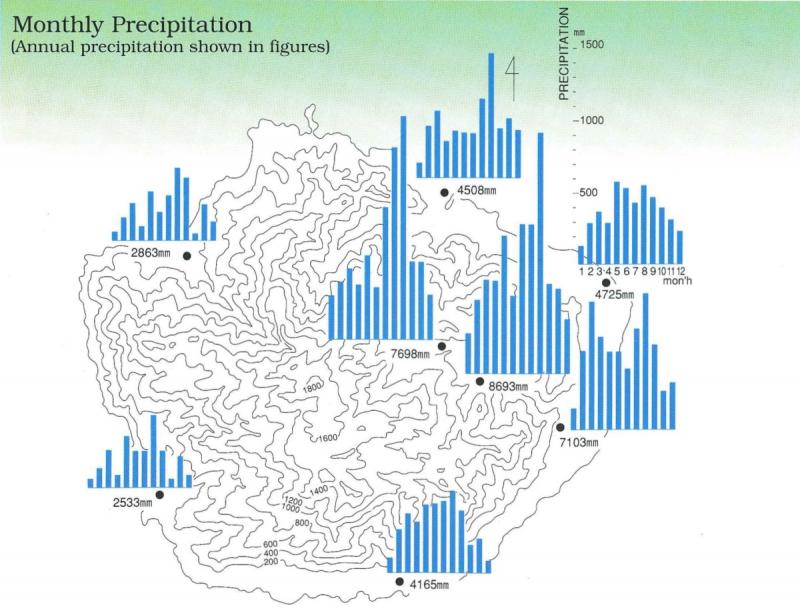
|
As is suggested by the local saying 35 rainy days a month, Yaku Island receives heavey rainfall all year
around. Its average annual precipitation is 4,400 millimeters. Kosugi Valley is the rainiest area, with an
average annual precipitation of 8,300 millimeters: it once set a record at the 10,000-millimeter level. The
Island's monthly precipitation for March through June and for September exceeds 400 millimeters, with
the peak in June (630 millimeters); even the lowest mothly figure, for January, is 228 millimeters.
|
|
|
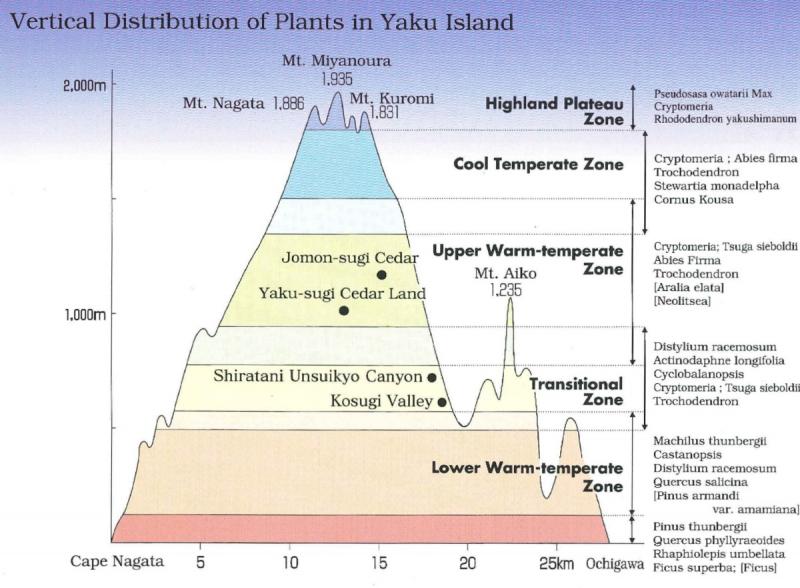
|
|
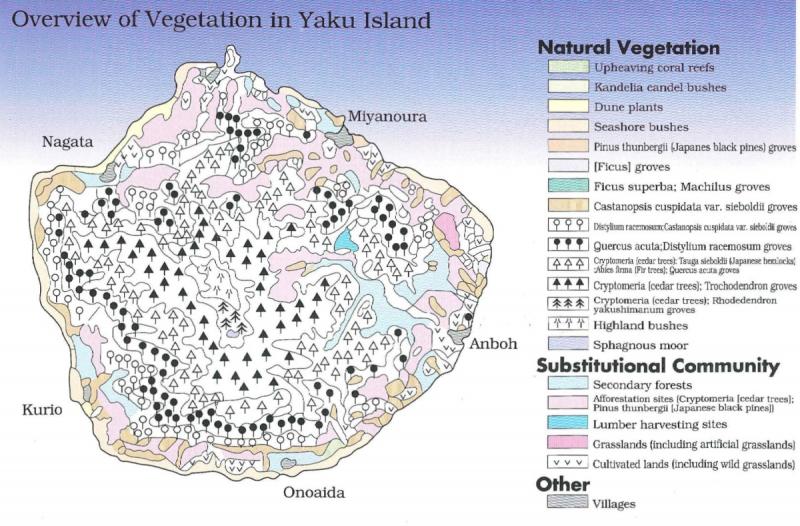
|
Vertical distribution of forests shows relatively clear continuity from subtropical to subarctic vegetation.
Although Fagus crenata, Picea jezoensis, and Abies veitchii, which are generally seen in forests in Japan,
are not found in Yaku Island, their niches are filled by Cryptomeria (cedar trees), Abies firma (Fir trees),
and Tsuga sieboldii (Japanese hemlocks).
|
|
The Region Identified as World Natural Heritage
The Convention for the Protection of " the World Cultural and Natural Heritage"
was adopted at the 17the General Conference of UNESCO (the United Nations
Educational, Scientific and Cultural Organization) in 1972, with the aim of
establishing an effective system of international cooperation and assistance to
protect areas designated as cultural and natural heritage of universal value.
On September 30, 1992, Japan became the 126th State Party to the Convention.
The Yaku Island National Forests were designated as a world natural heritage
area, for the first in Japan, on December 9, 1993.
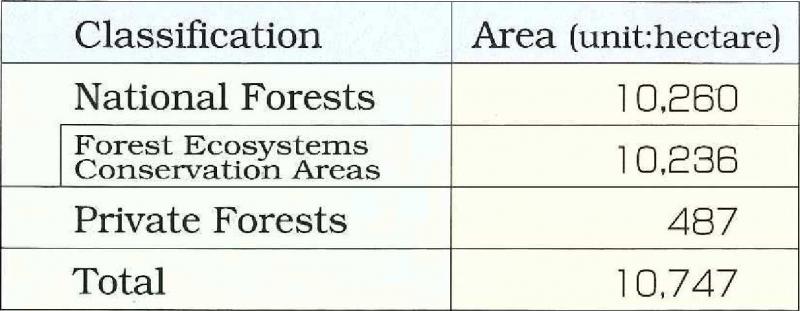
Yakushima Conservation Areas for Forest Ecosystems
Yaku Island Conservation Areas for Forest Ecosytems were designed and
established with the aim of contributing, through protection of primary natural
forests, to conserving natural environments containing forest eco-systems,
protecting plants and animals, preserving genetic resources, and developing
forestry and forest management techniques, and to scholarly research pertaining
to the above.
Yaku Island Conservation Areas for Forest Ecosytems are divided into the following
two types:
(1) conservation forests, in which the forest ecosystem is to be strictly preserved;
(2) preservation and utilization forests, which are to work as buffer zones
to prevent changes in the outside environment from affecting consevation
forests directly.
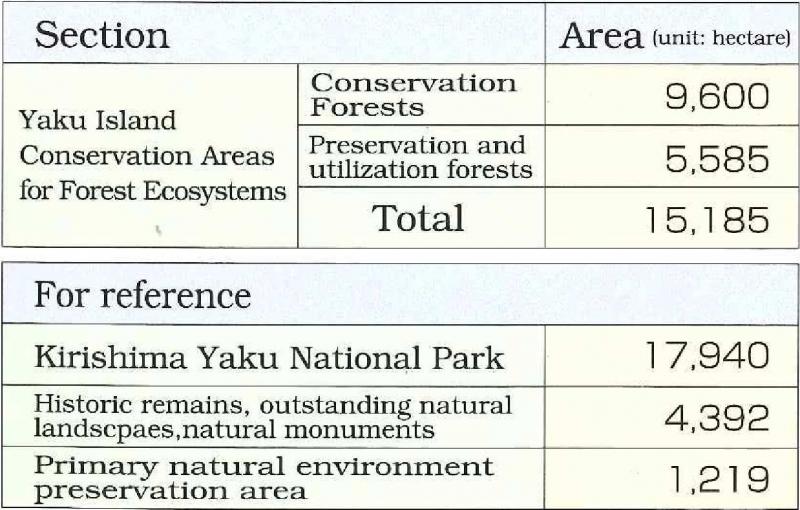
|
|
Kyusyu Regional Forest Administration Office, Planning Section
|
096-328-3613
|
| Yakusima Forest Ecosystem Coservation Center |
0997-42-0331
|
| Yakusima District Forest Administration Office |
0997-46-2111
|
|
|
![]()
![]()